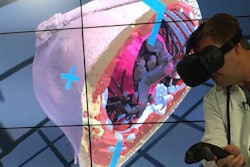The distal radioulnar joint contributes to rotatory forearm movements including pronation and supination, but it is prone to instability, leading to wrist pain, insufficiency, and limited range of motion. Issues are often missed in static exams with CT or even MRI, and missing the diagnosis means exposing the wrist to future complications, said Dr. Nima Hafezi Nejad from Johns Hopkins School of Medicine.
The researchers used 4D CT to examine the bilateral wrists of 10 patients with wrist pain by examining movement of the asymptomatic contralateral joint using a double-oblique multiplanar reformatted (MPR) technique to define the true axial plane relative to the distal radioulnar joint. Two principal questions arose in this regard, noted Hafezi Nejad:
- Are submillimeter measurements from 4D CT examination of the distal radioulnar joint reliable in terms of interobserver consistency?
- What are the normal ranges of change in distal radioulnar joint measurements during active motion in asymptomatic wrists?
"Our study provided a normal range of expected changes in distal radioulnar joint alignment measurements in asymptomatic wrists and can be used as a reference for future assessments," Hafezi Nejad said.
The kinematic analysis showed increased volar ulnar subluxation with supination when calculated by one common measurement method but not the other, to be detailed in the presentation.



















